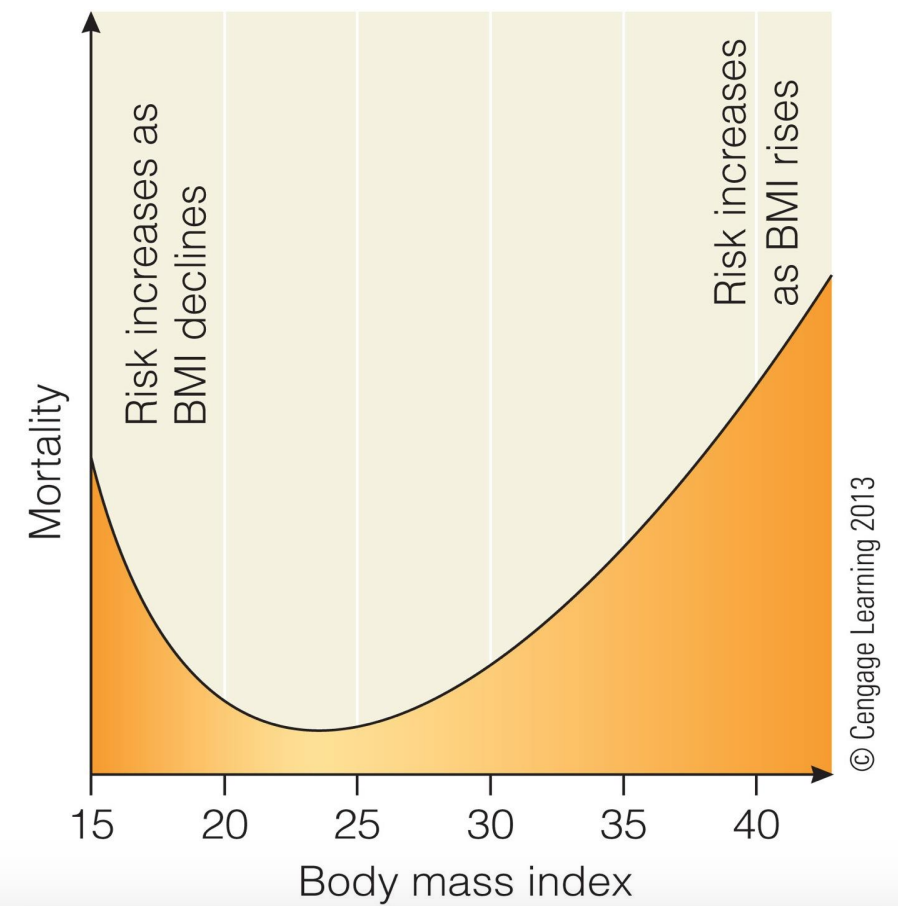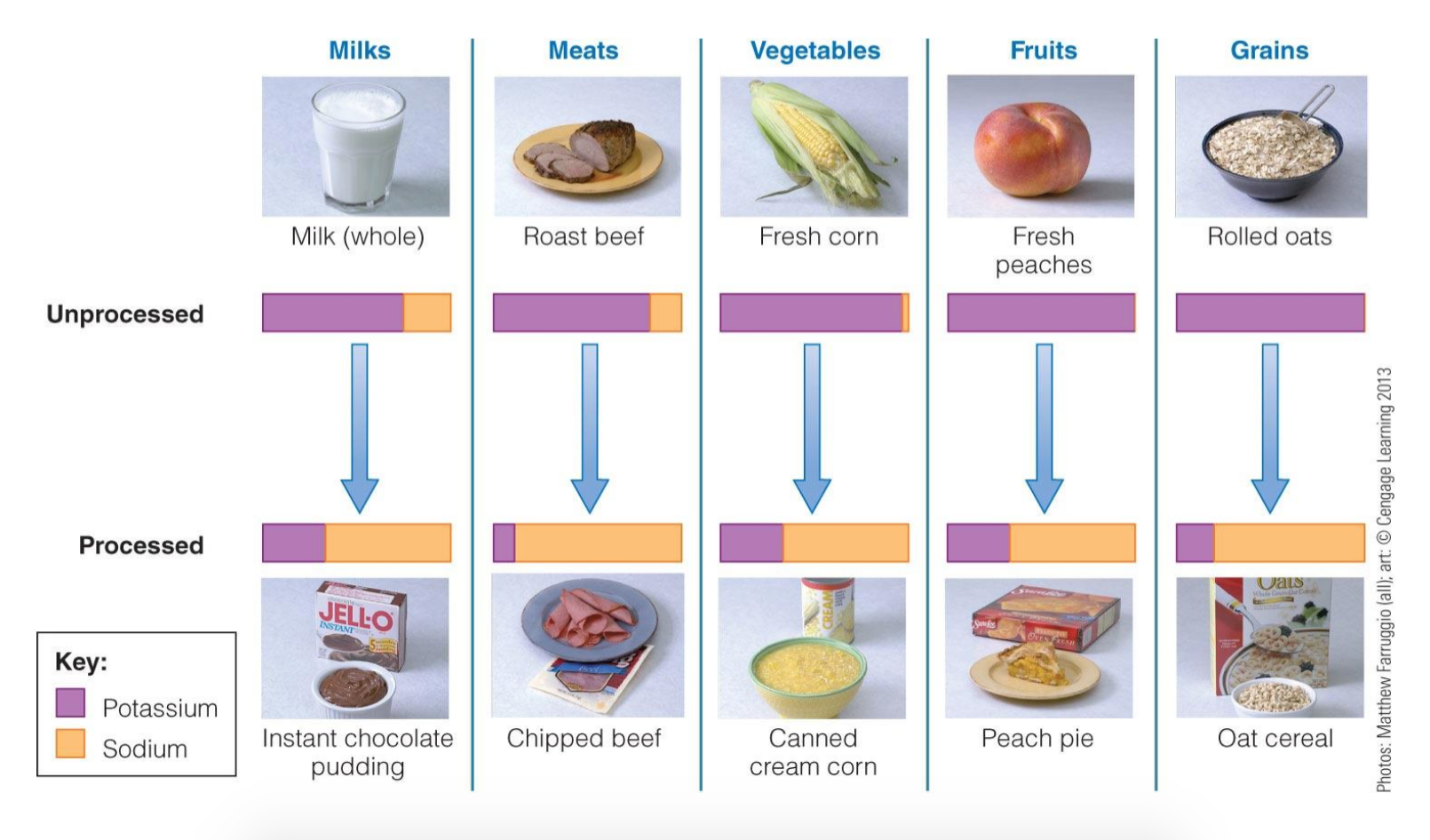
Notes on Nutrition
During this semester (my last one) at UT, I took a nutrition class. I think whatever I learned in that class is quite important throughout my life. This post is an attempt at summarizing the important and non-obvious points from that class so that I can remember them. Moreover, with so much mis-information floating around about nutrition, this post can act as an anchor to what I know is true. Before I get into it, I would like to thank my professor, Dr. Alejandra De Angulo for teaching and sharing all the material in class which is the basis for this post.
The Basics
This post is mostly about what we eat but it also covers fitness. What we eat can be broadly categorized into two categories: the food we need in large quantities (over one gram) called macronutrients (macros) and the food we need in small quantities (under one gram) called micronutrients (micros). Most of us know the macronutrients: carbs, protein and fat. All of them provide energy. Micronutrients are a little obscure and are stuck at the bottom of a nutrition label that almost no one pays attention to. Micros are not energy yielding and can be further divided into vitamins and minerals. Since this blog post is not about a survey of all the nutrients, their sources, etc. (which is an easy way to make it boring), I will not list them all out. However, you will come across some of them later in the post.
The National Academy of Medicine came up with a set of standards called the Dietary Reference Intake that gives a recommended intake (called RDA) for all the nutrients and energy needed to sustain us. RDAs (linked at the bottom) should be enough to sustain 97.5% of healthy individuals. Now that you know about RDAs, when someone says you need to eat more healthy, it should translate in your head to “you are not meeting your RDA for certain nutrients.” It does not necessarily mean to eat more spinach.
Body Mass Index (BMI) is a number that aims to measure our health as a function of our weight to height. US’s NIH defines BMI ranges for underweight, normal, overweight and obese categories (excluding athletes, pregnant women, etc.). Mortality and disease risk increases as BMI varies from the normal range (shown in image below). It is important to understand our BMI in order to form our weight and nutrition goals.

The rest of the blog post is a list of takeaways from the class based on the above basics.
Fitness
I found the discussion of fitness in this class pretty neat. In class we defined fitness as the “ability to meet physical demands with enough reserve energy to rise to a physical challenge.” This is intentionally vague and it depends on each person’s physical demands and challenges. Maintaining fitness can have a holistic improvement on ourselves and reduces risk of diseases. There are broadly aspects of fitness:
Cardiorespiratory endurance: is the ability of the heart, lungs and blood vessels to deliver oxygen throughout the body. Put in another way, it is the length of time a person can remain active with an elevated heart rate (any intense physical activity). We discussed two ways to gauge this endurance: measuring resting heart rate (lower the better) and VO2 max (higher the better) which measures the oxygen consumption during peak intensity. A good way to improve this aspect of fitness is to do aerobic exercises like running, crossfit, dancing, etc. for 20 or more minutes. Such exercises condition the heart to work more efficiently which gradually improves the cardiorespiratory endurance. The American College of Sports Medicine (ACSM) recommends doing five to seven days of 30-minute moderate intensity workouts involving large muscle groups (soccer, running, cycling, tennis, volleyball, etc). I definitely do not meet this recommendation.
Strength and muscle mass: does not need much explanation. It is important to maintain muscle mass and strength as we grow older because its the best indicator of being healthy in older adults. ACSM recommends two to three non-consecutive days of strength or resistance training like weightlifting.
Flexibility: is probably the most ignored aspect of fitness. As we grow older, a lack of flexibility in joints and muscles can drastically inhibit our physical activity. ACSM recommends two to seven days a week of active stretches (like yoga or pilates) to maintain flexibility.
Set Point Theory and Fat Cells
Set point theory states that every person has a (10-20 lb) weight range where their body is programmed to function optimally and their body will fight to maintain that weight range. For instance, metabolism gets pretty low after losing weight below this range which makes it hard to maintain the weight loss. From what I understood in the class and from some articles, set point theory is not an unbreakable law like the theory of relativity. However, this theory shows the difficulty in maintaining gained or lost weight. So maintaining 160 pounds when a person weighed 200 pounds for most of their life is quite harder than maintaining 160 pounds throughout their adult life.
While we are on the topic of weight, I also wanted to mention fat cells and their role in persistent obesity. Put in a crude way, fat cells can grow in size based on the fat storage required in the body but the number of fat cells are determined in our teens and the count does not change. If one gains a lot of weight in their teens, not only do the fat cells grow in size but they also replicate in an irreversible manner. So people who were obese during their teens can find it hard to keep weight off due to the extra fat cells in their body.
I mentioned both of these somewhat bleak facts not to give up our efforts. I mentioned them in order to be kind and supportive to the people (or yourself) who are trying to bring their BMI to a healthy range. Of course, it is still possible to rise above these odds and maintain a healthy weight (there are people who have done it).
Water and Thirst
On average, we lose 2.5 litres of water per day. To replenish the lost water, it is good to have a minimum of 2 - 3 litres (8 - 12 cups) of water per day. Another thing I learned in this class is that you cannot rely on thirst as an indicator to drink water. Thirst response lags behind the body’s need for water. Some of the other indications include being tired, hungry or lacking focus. So try drinking water before going for coffee or food when feeling tired or hungry.
Fluid Balance: Sodium vs Potassium
The human body is 60% water with 2/3rd of fluids inside the cell and 1/3rd outside the cell. This fluid balance between inside and outside the cell is maintained by electrolytes (which attract water). Sodium is a major electrolyte that is predominantly outside the cell whereas potassium is another major electrolyte that is found inside the cell. Due to the role that sodium plays in fluid balance and maintaining blood pressure, consuming a lot of salt (sodium and chloride) is linked to hypertension. Moreover, we need to consume the right amounts of sodium and potassium to maintain blood pressure but on average we exceed the recommended upper limit for sodium (2,300 mg vs 3,400 mg) and fall short on recommended potassium intake (4,700 mg vs 2650 mg). The average American diet will lead us in the wrong direction with respect to fluid balance. We can correct this by eating more unprocessed foods like nuts, seeds, fresh fruits and vegetables which are high in potassium and avoiding processed foods because they are high in sodium. The picture below shows the difference between processed and unprocessed foods.

Importance of Calcium
Calcium is the most abundant mineral in the body, mainly deposited in our bones. The body maintains a strict level of calcium in the blood either by regulating calcium absorption from food in the intestines or by breaking down bones which releases calcium. In the absence of a constant consumption of calcium-rich food, the body will resort to the calcium banks in the bones. If calcium in bones is depleted over a long time, the bones turn brittle and weak (also called osteoporosis). Osteoporosis is a common occurrence among older adults (especially women) that causes broken bones. You probably have heard of an older person in your life unfortunately falling down and breaking their hip or other bones. This is likely caused due to osteoporosis. The onset of osteoporosis can be significantly delayed by making sure that there is enough calcium from your daily food intake so that the body does not rely on calcium in the bones. So daily consumption of calcium can solve this entirely preventable chronic disease. We learned in class that we usually have peak bone mass in late twenties and all adults lose bone mass beginning somewhere between 30 and 40 (shown in picture below).

By meeting the RDA for calcium (1,000 - 1,300 mg) everyday, one can enter their thirties with a big calcium bank and drastically reduce the rate of bone loss going forward. The best source for calcium is milk and milk products. Although green leafy vegetables like spinach have a lot of calcium, the absorption is quite low compared to milk products. So nothing beats a glass of milk and some yogurt everyday for daily calcium. Weak and brittle bones as we grow older is quite avoidable by the food choices we make everyday.
Risks of Multivitamins
Multivitamins can act as a good insurance policy against any micronutrient RDAs you have missed. However, FDA does not tightly regulate the levels of each micronutrient in multivitamins. Having too much of certain micronutrients can cause toxicities. National Academy of Medicine sets an Upper Limit (UL) on such micronutrients that can lead to toxicities. These are some of the micronutrients to watch out for in multivitamins (source here):
- Iron: RDA - 8 mg, UL - 45 mg
- Zinc: RDA - 11 mg, UL - 40 mg
- Calcium: RDA - 1,000 mg, UL - 2,500 mg
- Folate (B-9): RDA - 400 mcg, UL - 1,000 mcg
- Niacin: RDA - 16 mg, UL - 35 mg
- Vitamin A: RDA - 900 mcg, UL- 3,000 mcg
Note that some of these upper limits only apply to micronutrients consumed in the form of supplements (not in food sources). Since the supplements industry is not well regulated, taking multivitamins can push consumption of certain micronutrients beyond the upper limits causing toxicities. So when picking a multivitamin, be sure to check if the dosage of all micronutrients is much lower than the upper limit.
